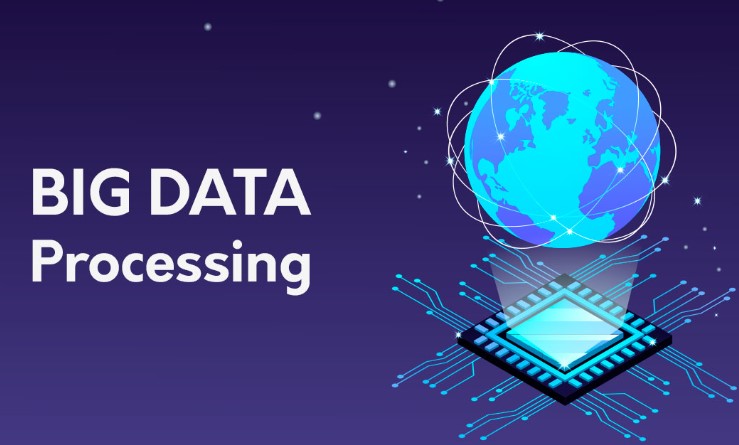Apache Cassandra is an open-source distributed NoSQL database system that has become popular in recent years for its ability to handle large volumes of data with high availability and scalability. In this article, we will discuss the role of Apache Cassandra in big data processing.
1. Introduction
Big data is a term used to describe large volumes of structured and unstructured data that is generated from various sources, such as social media, sensors, and machines. Managing and processing big data is a major challenge for businesses, and Apache Cassandra is one of the solutions that have emerged to help solve this challenge. In this article, we will discuss the role of Apache Cassandra in big data processing.
2. What is Apache Cassandra?
Apache Cassandra is an open-source distributed NoSQL database system that is designed to handle large volumes of data with high availability and scalability. It was developed by Facebook and is now maintained by the Apache Software Foundation. Apache Cassandra is highly scalable and fault-tolerant, making it a popular choice for big data processing.
3. Benefits of Apache Cassandra in Big Data Processing
Apache Cassandra offers several benefits for big data processing, including:
- High availability and scalability: Apache Cassandra is designed to handle large volumes of data with high availability and scalability. It is highly fault-tolerant and can handle multiple nodes in a distributed environment, making it ideal for big data processing.
- Flexibility: Apache Cassandra is a NoSQL database system, which means it is highly flexible and can handle unstructured and semi-structured data. This makes it a popular choice for big data processing, where data can be in various formats.
- Speed: Apache Cassandra is designed to handle high volumes of data with low latency, making it ideal for real-time data processing.
4. How Apache Cassandra Handles Big Data
Apache Cassandra is designed to handle big data by using a distributed architecture. The data is partitioned and distributed across multiple nodes, which allows for high availability and scalability. Apache Cassandra also uses a peer-to-peer architecture, which means that there is no single point of failure.
Apache Cassandra also uses a replication strategy to ensure that data is always available. Data is replicated across multiple nodes, which allows for redundancy and fault-tolerance. In addition, Apache Cassandra uses a consistent hashing algorithm to distribute data evenly across nodes, which helps to balance the workload.
5. Use Cases of Apache Cassandra in Big Data Processing
Apache Cassandra is used in a variety of use cases for big data processing, including:
- IoT data processing: Apache Cassandra is used to process and store data generated from IoT devices, such as sensors and smart devices.
- Social media data processing: Apache Cassandra is used to process and store data generated from social media platforms, such as tweets and posts.
- Financial data processing: Apache Cassandra is used to process and store financial data, such as transaction records and market data.
6. Conclusion
In conclusion, Apache Cassandra is a popular distributed NoSQL database system that is designed to handle large volumes of data with high availability and scalability. It offers several benefits for big data processing, including high availability and scalability, flexibility, and speed. Apache Cassandra is used in a variety of use cases for big data processing, including IoT data processing, social media data processing, and financial data processing.
7. FAQs
Q1. What is the difference between NoSQL and SQL databases?
A1. NoSQL databases are designed to handle unstructured and semi structured data and are highly flexible, while SQL databases are designed to handle structured data and are highly rigid.
Q2. What are the benefits of using a distributed architecture for big data processing?
A2. The benefits of using a distributed architecture for big data processing include high availability, scalability, and fault-tolerance.
Q3. What is fault-tolerance?
A3. Fault-tolerance is the ability of a system to continue operating even if one or more components fail.
Q4. How does Apache Cassandra ensure high availability and scalability?
A4. Apache Cassandra ensures high availability and scalability by using a distributed architecture, replication strategies, and consistent hashing algorithms.
Q5. Can Apache Cassandra handle real-time data processing?
A5. Yes, Apache Cassandra is designed to handle real-time data processing with low latency.
Q6. What are some of the use cases for Apache Cassandra in big data processing?
A6. Some of the use cases for Apache Cassandra in big data processing include IoT data processing, social media data processing, and financial data processing.
Q7. What are some of the challenges of using Apache Cassandra for big data processing?
A7. Some of the challenges of using Apache Cassandra for big data processing include managing data consistency across nodes, optimizing data partitioning and replication, and configuring the system for optimal performance.
Q8. How does Apache Cassandra compare to other big data processing tools, such as Hadoop?
A8. Apache Cassandra and Hadoop are both popular tools for big data processing, but they have different strengths and weaknesses. Apache Cassandra is designed for high availability, scalability, and real-time data processing, while Hadoop is designed for batch processing and complex data analytics.
Q9. Can Apache Cassandra be used in conjunction with other big data processing tools?
A9. Yes, Apache Cassandra can be used in conjunction with other big data processing tools, such as Apache Spark and Hadoop, to create a comprehensive big data processing solution.
Q10. What are some of the best practices for using Apache Cassandra for big data processing?
A10. Some of the best practices for using Apache Cassandra for big data processing include properly configuring the system for optimal performance, monitoring the system for errors and performance issues, optimizing data partitioning and replication, and using appropriate data models and query patterns.
